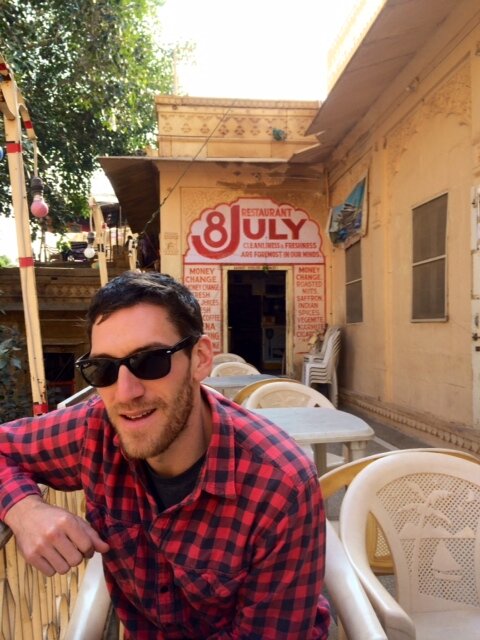Jaisalmer: A Desert Trading Route Revisited
This post is very much out of sequence (as will be my next one) because they involve places that Sam and I visited in Rajasthan about 6 weeks ago. Somehow they just never got finished.Jaisalmer was the place in Rajasthan that Sam was most anxious to visit. It is a small town in the far west of India, in the Great Thar Desert near Pakistan. Located on the trading route between India and Central Asia, it had grown wealthy from camel caravans until transport via ocean shipping and trains in the 19th century made it a dusty forgotten backwater town. Partition of Pakistan and India in 1947 cut the last of the town’s trading role and pushed it into further decline.The town was “discovered” by tourists about 50 years ago. They were drawn by the massive fort built in the 12th century that still dominates the town, and also by the havelis, magnificent sandstone houses of long gone merchants that have intricately carved exteriors.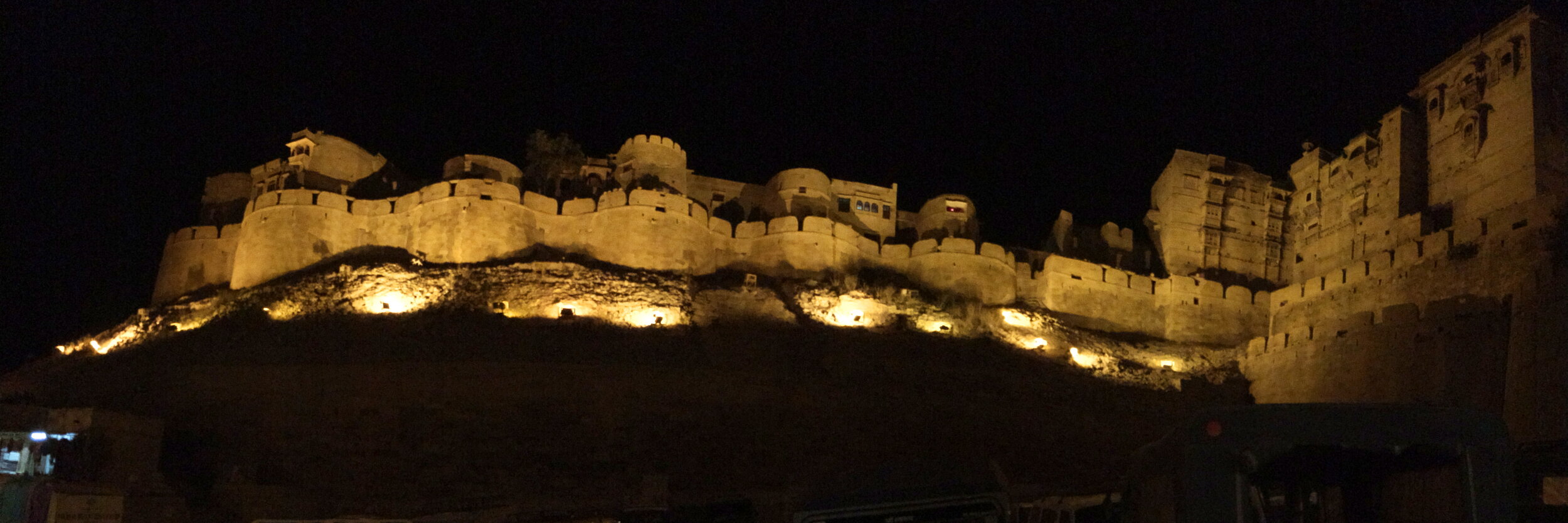
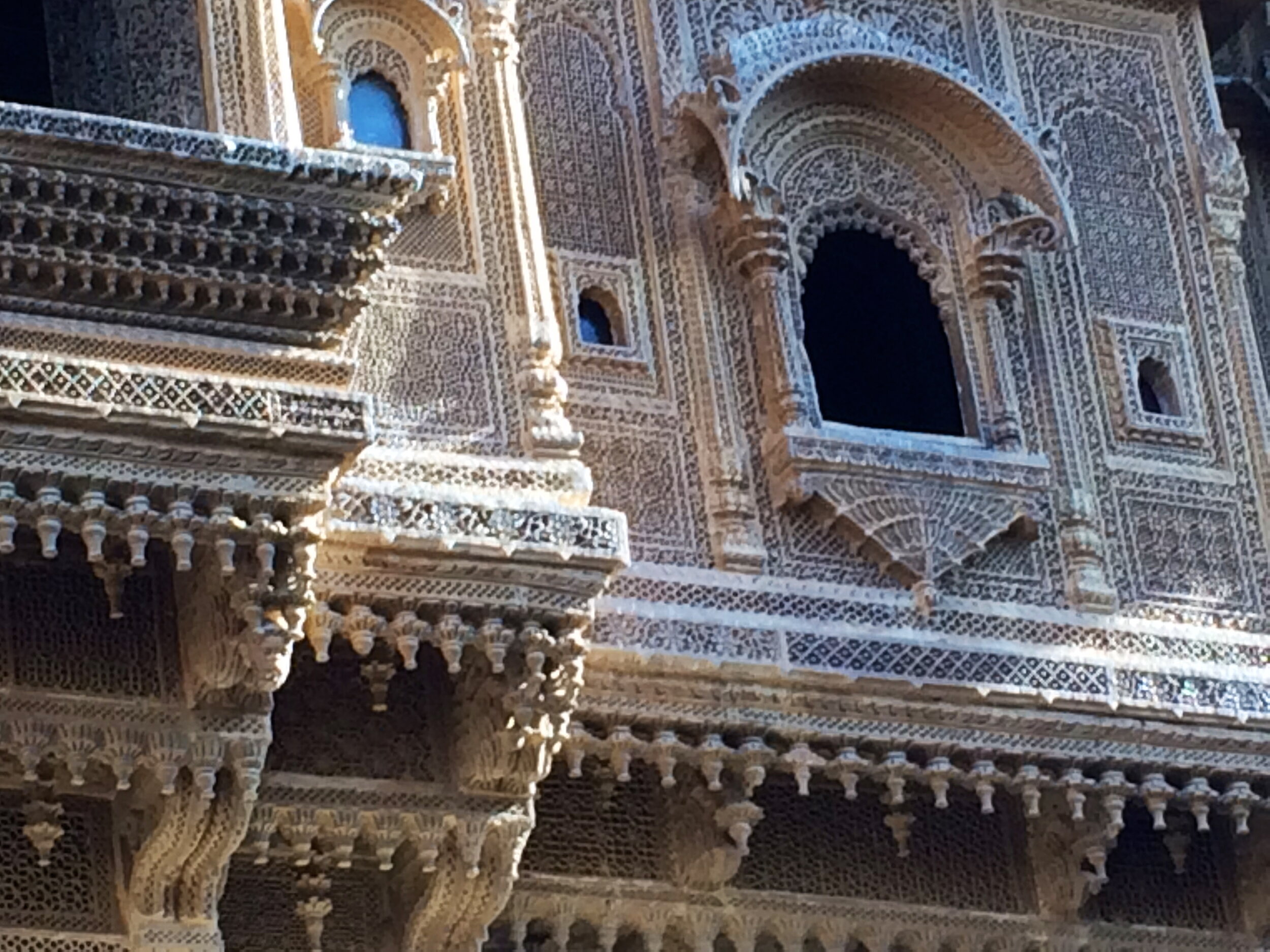 A community of about 3,000 people still lives inside the fort and I decided to spring for a hotel that is actually part of the fort wall. It has only 6 rooms, each overlooking the outermost of four massive gates (shown below) that protect the fort’s single entryway.
A community of about 3,000 people still lives inside the fort and I decided to spring for a hotel that is actually part of the fort wall. It has only 6 rooms, each overlooking the outermost of four massive gates (shown below) that protect the fort’s single entryway.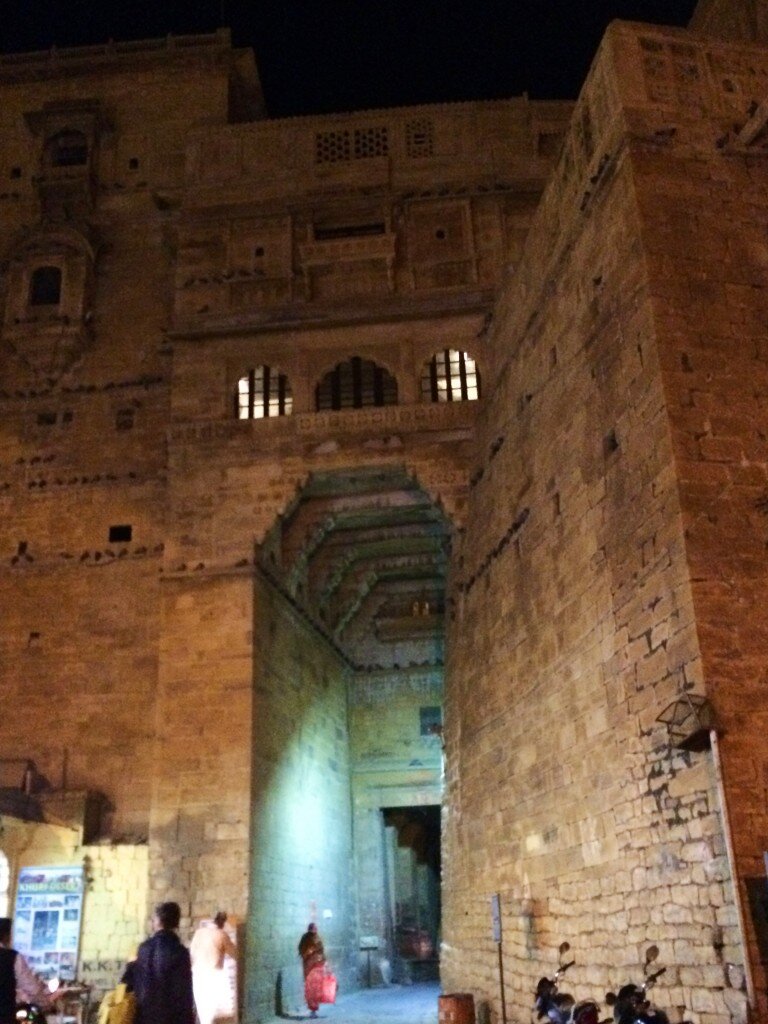 The view from our room's terrace of the fort, the surrounding town and distant desert. Jaisalmer Hotel Patio Video
The view from our room's terrace of the fort, the surrounding town and distant desert. Jaisalmer Hotel Patio Video
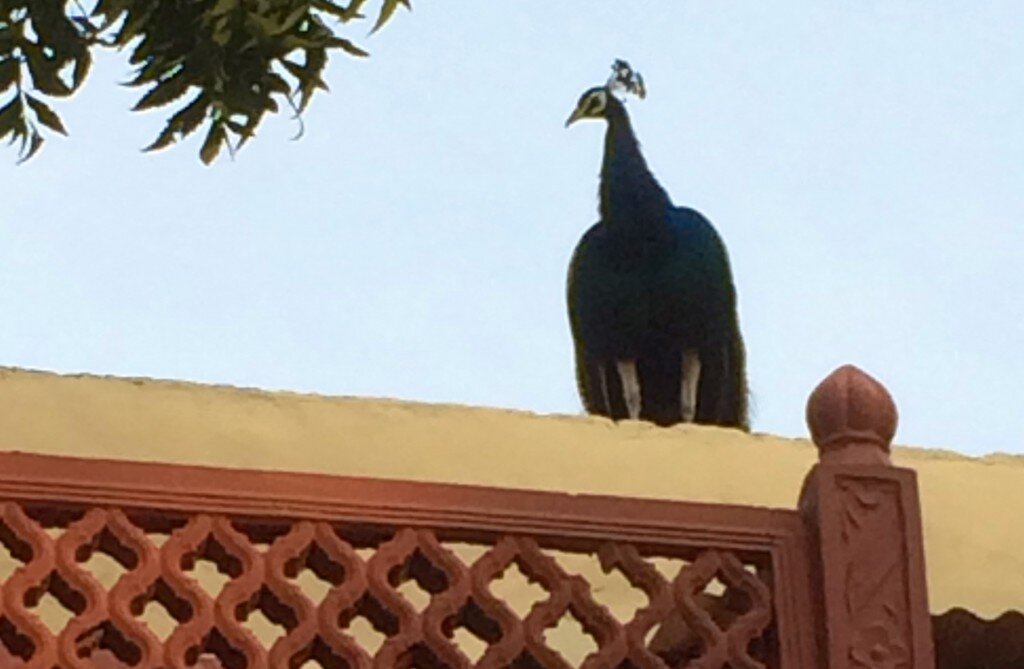 Because Jaisalmer is close to the Pakistani border there is a substantial military presence in the area. The roads into and out of town are lined with army installations, with many clusters of tanks scattered around within sight of the roads. Fighter jets from nearby airbases fly overhead throughout the day and night.Also, perhaps to provide the military with reliable electricity (while the rest of the country’s population suffers frequent outages) there are massive windfarms spread across the desert landscape. It’s definitely an otherworldly experience to stand in the empty desert among crumbling 500-year-old tombs with nothing else in sight except wind turbines that stretch to the horizon.The road across the desert between Jaisalmer and Jodhpur proved to be a mini obstacle course as we encountered cows, water buffalo, camels, goats, sheep and peacocks wandering the landscape and ambling across the road with not a glance for passing vehicles. Other than the peacocks, most ignored the blaring horns of the buses and lorries, and almost all vehicles slowed or stopped while the road was blocked. We saw two incidents of why I can only say “almost all.” The first was a buffalo on the roadside that didn’t survive its encounter with a bus. Having already lost its life on the road, it was in process of losing its hide on the roadside so a farmer could put the leather to good use. The other was a family of three camels, including a baby, lying across the road in front of a lorry whose front end and windshield were also smashed beyond resurrection. The rarity of these fatal encounters surprised us since our own car seemed at peril of colliding with crossing animals dozens of time each day.Jaisalmer is also the site of a Brody family tradition that Max Brody started more than 20 years. There is a restaurant called 8 July that consists of a row of tables on a narrow second story balcony overlooking the fort's main square. It is a great people-watching place to while away the afternoon drinking mango lassis and eating apple pie. They don’t really go with each other, and the apple pie is not particularly good. But it’s a long-standing tradition that all visiting Brodys must honor.
Because Jaisalmer is close to the Pakistani border there is a substantial military presence in the area. The roads into and out of town are lined with army installations, with many clusters of tanks scattered around within sight of the roads. Fighter jets from nearby airbases fly overhead throughout the day and night.Also, perhaps to provide the military with reliable electricity (while the rest of the country’s population suffers frequent outages) there are massive windfarms spread across the desert landscape. It’s definitely an otherworldly experience to stand in the empty desert among crumbling 500-year-old tombs with nothing else in sight except wind turbines that stretch to the horizon.The road across the desert between Jaisalmer and Jodhpur proved to be a mini obstacle course as we encountered cows, water buffalo, camels, goats, sheep and peacocks wandering the landscape and ambling across the road with not a glance for passing vehicles. Other than the peacocks, most ignored the blaring horns of the buses and lorries, and almost all vehicles slowed or stopped while the road was blocked. We saw two incidents of why I can only say “almost all.” The first was a buffalo on the roadside that didn’t survive its encounter with a bus. Having already lost its life on the road, it was in process of losing its hide on the roadside so a farmer could put the leather to good use. The other was a family of three camels, including a baby, lying across the road in front of a lorry whose front end and windshield were also smashed beyond resurrection. The rarity of these fatal encounters surprised us since our own car seemed at peril of colliding with crossing animals dozens of time each day.Jaisalmer is also the site of a Brody family tradition that Max Brody started more than 20 years. There is a restaurant called 8 July that consists of a row of tables on a narrow second story balcony overlooking the fort's main square. It is a great people-watching place to while away the afternoon drinking mango lassis and eating apple pie. They don’t really go with each other, and the apple pie is not particularly good. But it’s a long-standing tradition that all visiting Brodys must honor.